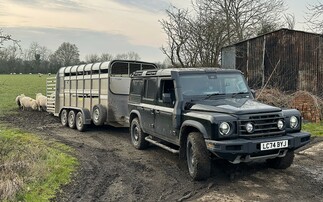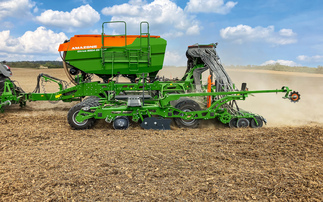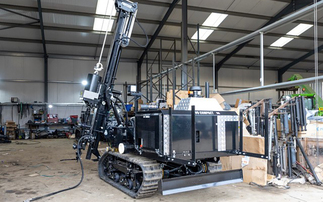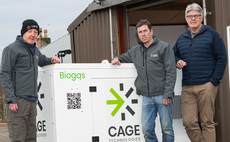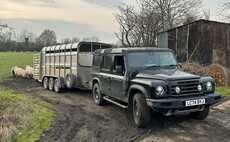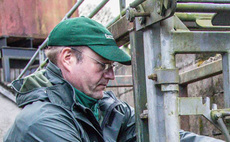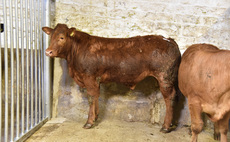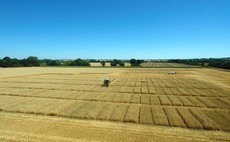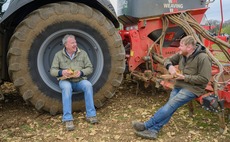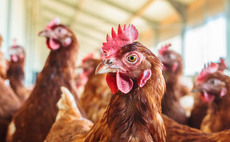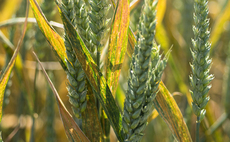Getting the most from a machine, aka your monies-worth, is music to a lot of farmers' ears, which bodes well for Pottinger's latest development, a multi-purpose drill. James Rickard checks out the Precision Combi Seeder.
lead pic
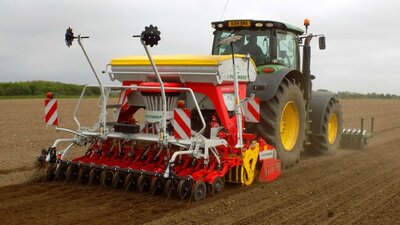
Versatility is the aim of the game with new Pottinger PCS drill.
Intro
Originally launched in the UK two years ago at the Lamma event, Pottinger's Aerosem Precision Combi Seeder (PCS) soon hit the headlines as a versatile drill able to plant both cereal crops and maize.
Based on the firm's Aerosem air seeder, the PCS variant gets several extra elements allowing it to be used as a maize planter including a split hopper, maize seed singulation and boosted coulter pressure.
The concept is aimed primarily at mixed farms, particularly those who want to keep control of when they want to plant their crops, and to some extent smaller contractors who want to have one versatile machine rather than two separate machines for two different jobs.
Widths available are three and four metres.
To find out what the PCS is all about, we caught up with an Aerosem 3002 PCS as it undertook a UK-wide demo tour during maize planting season.
Aerosem 3002 PCS specifications
- Working width: 3m
- Cereal seed row spacing: 125mm
- Maize seed row spacing: 750mm (four rows)
- Total hopper capacity: 1,850l (with extensions)
- Split hopper capacity: two, 425l hoppers for maize, one, 1,000l hopper for fertiliser
- Coulter pressure: 50kg
- Power requirement: 140hp plus
- Hydraulic requirements: 35l/min for the fan, 30l/min for hydraulic metering unit, and one service for the bout markers
- Retail price: £42,000 with PCS, IDS, double disc coulters, CCI terminal, hydraulic coulter pressure adjustment, hopper extension and bout markers
Hopper
The hopper comprises three compartments positioned side-by-side, with foldable partitions each side of the centre compartment. When in cereal drilling mode, these partitions are folded outwards, blanking off the outlets to the precision metering wheels for maize planting, and creating one big compartment.
To go maize planting, the partitions are folded vertically, creating three separate hoppers; the outer two for maize seed and the central hopper for either fertiliser or possibly grass seed for an under sown crop, for example.
It is a very neat and simple solution, which can be achieved in a matter of minutes.
Seed level indicators are standard, and a solid and secure platform runs the entire width of the hopper, allowing convenient and safe filling.
hopper pic
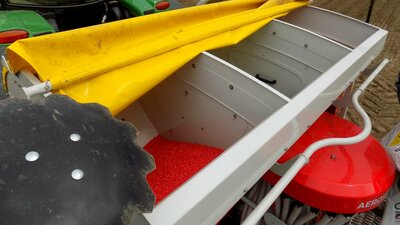
Seed metering
Maize seed is gravity fed to hydraulic metering units underneath the hopper. The metering units have been developed by a Canadian firm and use neither pressure nor vacuum to singulate the seed. Instead, sprung-loaded ‘clips' pick up and hold the seed on the metering wheel as it revolves.
This does mean a bit more set-up is required to match the capability of the singulation unit to the size of the seed, done via the turning of a key, which alters how wide the ‘clip' opens.
Blown air, the same air which comes from the main fan, is then used to propel the seed along seed lines to the coulters.
Both the hydraulic maize seed metering and electric cereal seed metering systems automatically alter their rates depending on forward speed, with speed signals coming from the drills own on-board Egnos GPS receiver.
Mechanical metering is an option, but not on PCS machines.
For automatic seed shut off, a wheel on an arm runs alongside the coulters, which triggers an electrical signal every time the drill is lifted in or out of work, telling the metering unit when to switch on or off.
seed metering pic
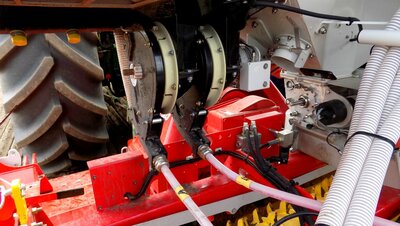
Distribution head
For maize drilling, the distribution head takes care of fertiliser application, which requires a cylindrical blanking plate to block off every thrid seed coulter - seed coulters which are now planting maize seed.
In addition, the firm's Intelligent Distribution System (IDS) allows an operator to alter tramline widths at the push of a button and affords half width shut off. If planting OSR for example, every other row can also be shut off.
Control is via the drills own controller, or via a tractor terminal through the use of IsoBus.
Maize seed rates can either be set by area or distance.
Via optical sensors in the maize seed tubes, seed numbers can be monitored with alerts if seed rates get too high or too low.
The sensors will also pick up on doubles and misses. However, the optical sensors can only count every fourth seed, not giving you the full picture as to what is going on, but a decent picture none-the-less.
dist head pic

Coulters
Various coulter options are available. This machine was fitted with two rows of double discs, required for PCS, mounted on two separate bars, meaning coulter arm lengths are the same, and in theory, coulter pressure should also be the same.
When planting maize, the adjacent seed coulters can be used to apply fertiliser.
Coulter pressure can be independently set from coulter depth, both of which can be done from a single point. In addition, independent coulter depth can also be set.
For cereals planting, row spacing on this machine is 125mm, although 150mm spacing can be specified from the factory. To plant maize with a row spacing of 750mm, four coulters are used along with the four precision seed metering units. For narrower maize row spacing, up to eight metering units can be fitted to a 3m machine.
Maize coulters also feature an extra spring for increased ground pressure and an extra press wheel to prevent seed bounce.
coult pic
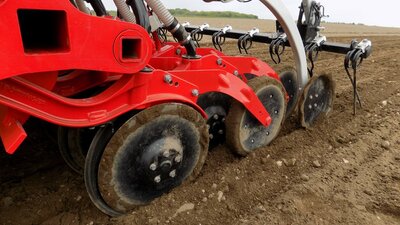
Cultivation
The Aerosem drill can be mounted over a variety of the manufacturer's cultivators including its Fox tine or disc cultivators. For maize, though, particularly if ploughed land is to be worked down, the firm recommends its Lion power harrow - in this case a Lion 303.
The drill is mounted over the roller, moving with the roller, allowing the drill to maintain a consistent sowing depth.
Bringing up the rear, a tine harrow can have its depth and working angle adjusted via pins, to get the desired finish.
The drill can also be dropped off the power harrow and the power harrow used on its own. This is simply done by inserting stands into either side of the drill's frame, releasing four pins, and disconnecting any pipe work or electrical cabling.
cult pic
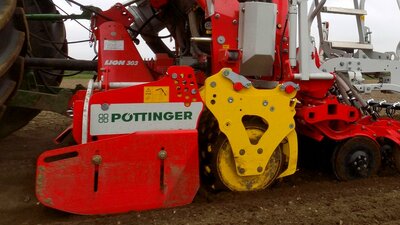
Verdict
It is easy to see where this drill fits into the market - ideal for mixed farmers or small contractors who only drill small amounts of maize.
By no means is this a fully fledged maize drill. Its speciality is planting cereal crops, it just so happens it can do a bit of maize. As a result, do not expect the precision you would get with a dedicated precision planter, but it is not a million miles off at just slightly more than Pottinger's claimed tolerance of 10 per cent.
It also means you only need one machine instead of two, which can be kept busy with an extended season, and you can take control of your own planting when the conditions are right.
So far the precision seeding element of the drill can only handle maize, but the firm is looking into other crops such as OSR and sugar beet. Also, PCS cannot be retro fitted to existing Aerosem drills, it has to be factory built.
verdict pic
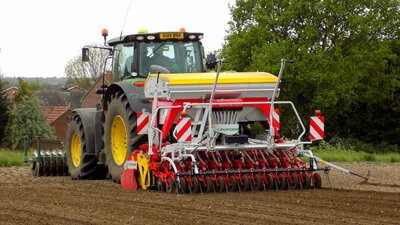
Verdict
It is easy to see where this drill fits into the market - ideal for mixed farmers or small contractors who only drill small amounts of maize.
By no means is this a fully fledged maize drill. Its speciality is planting cereal crops, it just so happens it can do a bit of maize. As a result, do not expect the precision you would get with a dedicated precision planter, but it is not a million miles off at just slightly more than Pottinger's claimed tolerance of 10 per cent.
It also means you only need one machine instead of two, which can be kept busy with an extended season, and you can take control of your own planting when the conditions are right.
So far the precision seeding element of the drill can only handle maize, but the firm is looking into other crops such as OSR and sugar beet. Also, PCS cannot be retro fitted to existing Aerosem drills, it has to be factory built.
"}" data-sheets-userformat="{"2":7041,"3":{"1":0},"10":2,"11":0,"12":0,"14":[null,2,0],"15":"Arial, sans-serif"}">
It is easy to see where this drill fits into the market - ideal for mixed farmers or small contractors who only drill small amounts of maize.
By no means is this a fully fledged maize drill. Its speciality is planting cereal crops, it just so happens it can do a bit of maize. As a result, do not expect the precision you would get with a dedicated precision planter, but it is not a million miles off at just slightly more than Pottinger's claimed tolerance of 10 per cent.
It also means you only need one machine instead of two, which can be kept busy with an extended season, and you can take control of your own planting when the conditions are right.
So far the precision seeding element of the drill can only handle maize, but the firm is looking into other crops such as OSR and sugar beet. Also, PCS cannot be retro fitted to existing Aerosem drills, it has to be factory built.










